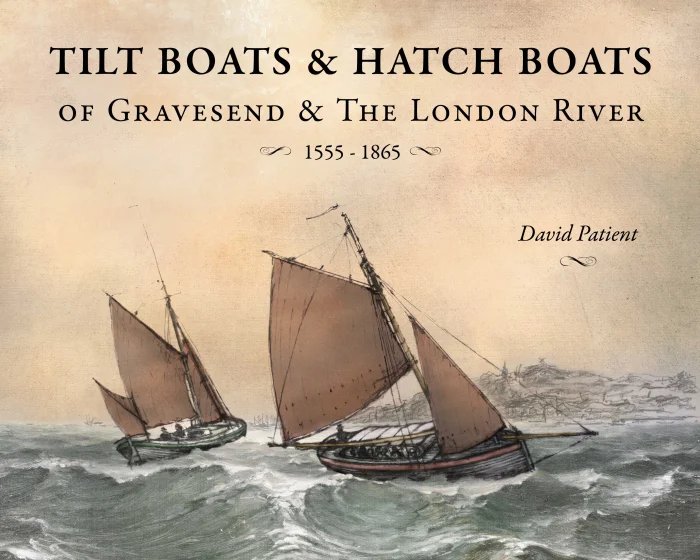Wow! David Patient asked me to provide a foreword for his book on a pet topic of mine, commercial Thames boats, and I just received the finished product:
It’s glorious, such high-production quality. My foreword flows thusly, or should I say runs:
Tilt Boats & Hatch Boats of Gravesend & The London River
Sir Winston Churchill (1874-1965) described the Thames as “the silver thread which runs through the history of Britain.” This book shows how much tilt boats and hatch boats contributed to that silver thread, and how their legacy lives on along our river today.
I first met David Patient when he guided my wife Elisabeth and me in our two decades restoration of the Lady Daphne, a 1923 wooden Thames sailing barge. We are enthusiasts about traditional craft, but David is an expert. Now, as the 695th Lord Mayor of London, I assume as well the one-year post of Admiral of the Port of London. History literally flows through every part of our City. Thus, it gives me great pleasure to provide a short foreword for David’s excellent book, ‘Tilt Boats & Hatch Boats of Gravesend & The London River’.
As this book sets out, the Lord Mayor of London has a historic association with the ‘Long Ferry’ between Gravesend and Billingsgate, which was run by the Gravesend Corporation. These tilt boats often provided a quicker and safer route than travel by road, which was periodically plagued by highwaymen at Blackheath and Shooter’s Hill. As well as the tilt boats carrying passengers, hatch boats carried fresh fish from Gravesend to Billingsgate Fish Market.
Since London’s founding as a port city by the Romans, the City’s history has depended on the boats of the River Thames. To this day, the City of London Corporation has a special responsibility as the port health authority for the Thames – stretching well beyond London’s boundaries. Throughout my term as Lord Mayor, the City is celebrating the place of the River Thames in the life of London. In centuries past, the Lord Mayor’s Show installing the Lord Mayor in office took the form of a flotilla along the Thames – which is said to be why we still refer to ‘floats’ in a carnival. The Lord Mayor and the London livery companies used barges for business, for ceremony, and for a combination of both – including receiving visitors at Gravesend and then sailing them into the City. We have recently revived the water bailiffs, the Lord Mayor’s View of the Thames, and promoted Thames Day to coincide with World Rivers Day.
Mansion House, the home of Lord Mayors for their year in office, is full of reminders of the City’s maritime heritage – including the ‘Nile suite’ of furniture, replete with golden rope and anchor decorations, commemorating Nelson’s victory at the Battle of the Nile. One of the stained-glass windows depicts the procession of Queen Elizabeth I by river from Westminster to the City. We are fortunate to have numerous 17th century Dutch paintings in the Samuel Collection depicting Dutch spritsail rigs, which inspired the design of the Thames barges. As late as 1903 a Joint Select Committee of the Lords and Commons estimated that 75% to 80% of the whole traffic of London was carried by barges.
John Burns (1858-1943) rhapsodised, “I have seen the Mississippi. That is muddy water. I have seen the Saint Lawrence. That is clear water. But the Thames is liquid history.” David’s book adds fresh water to that history.
Alderman Professor Michael Mainelli
The Rt Hon The Lord Mayor of London, 2023-2024

